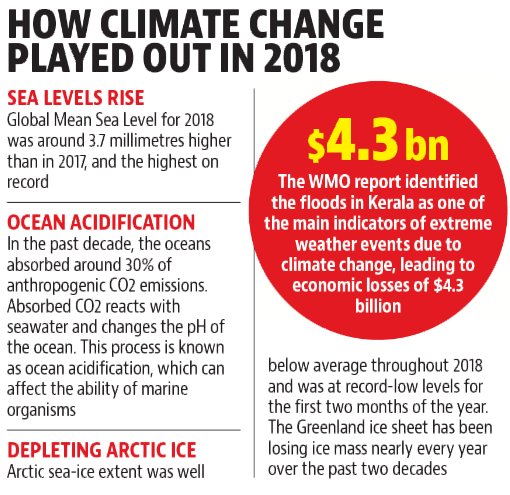7667766266
enquiry@shankarias.in
Why in news?
The World Meteorological Organization (WMO), the UN's weather agency, released its annual report, State of the Global Climate in 2018.
What are the highlights?

What are the notable climate change impacts?
Source: Hindustan Times

Niharika 6 years
thank you